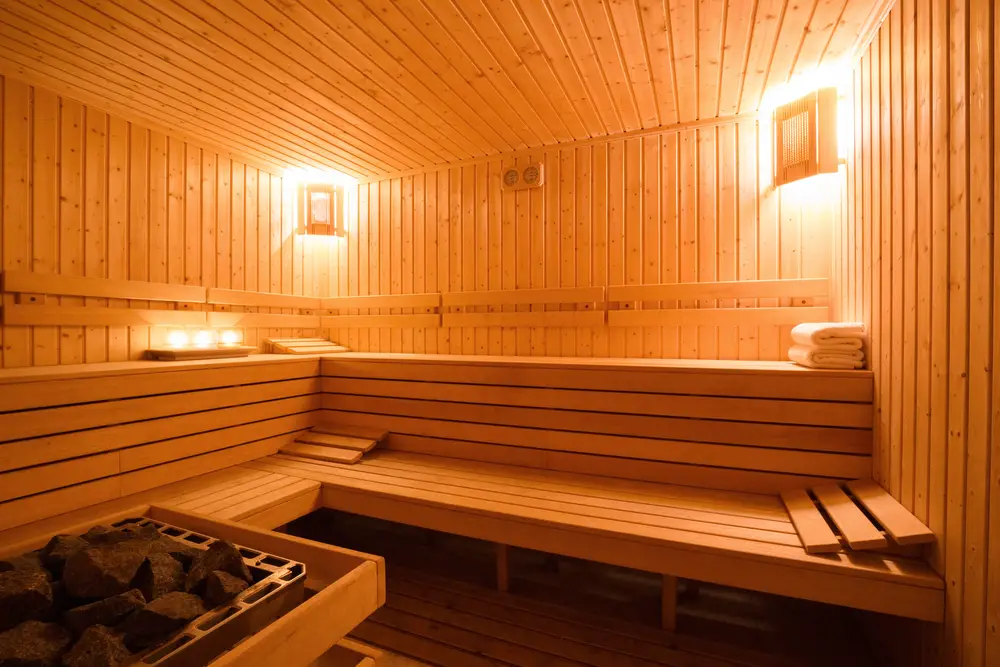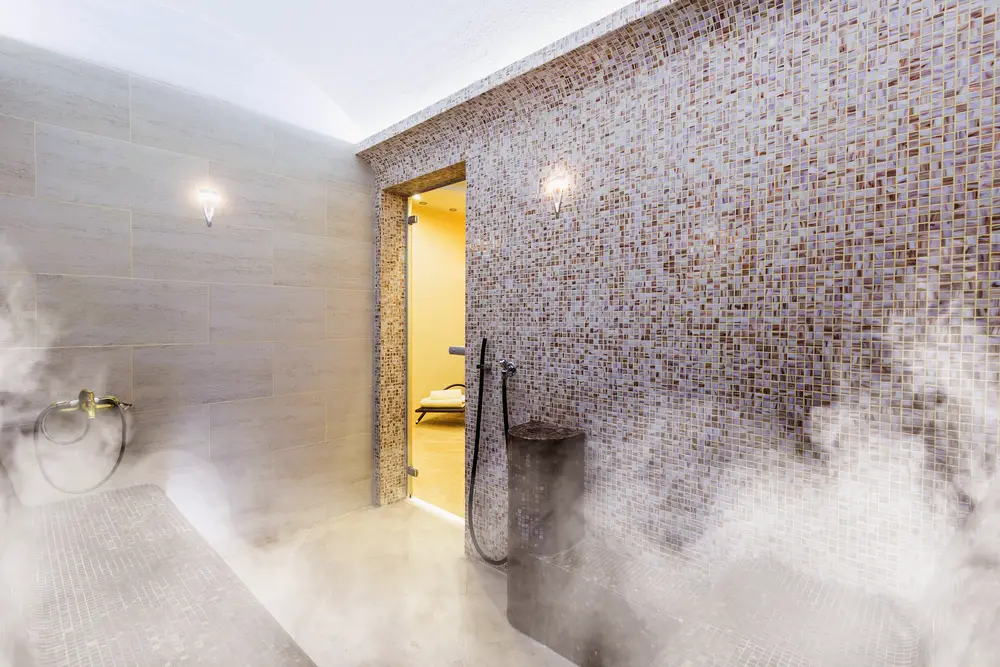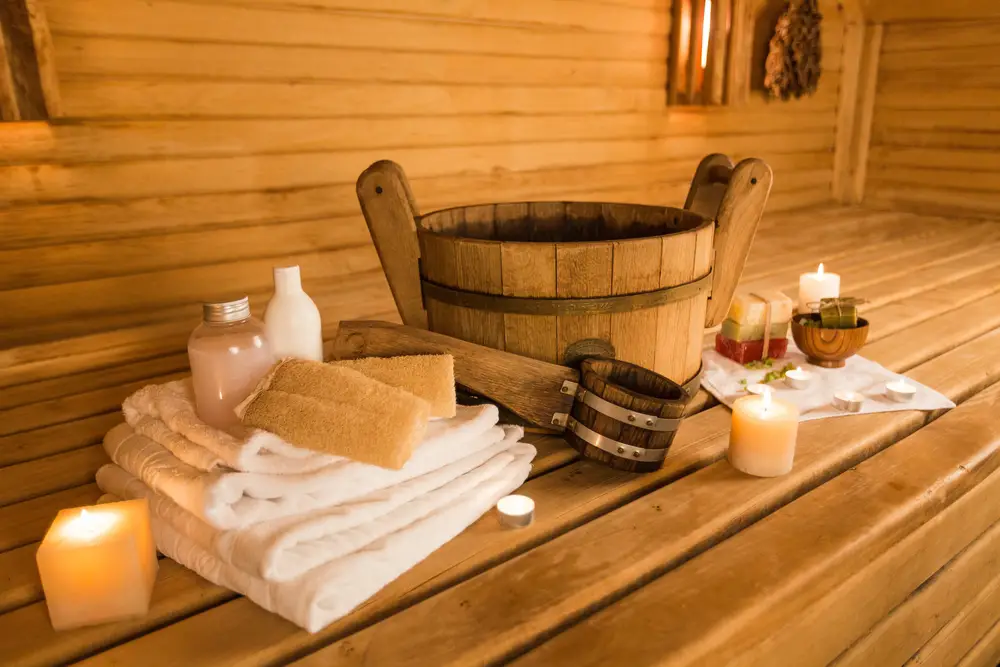Saunas have been a popular form of relaxation and therapy for generations, and technological advancements have made home saunas more accessible and diversified. We cover the main home sauna types in this article.
Home saunas come in three main types: traditional steam, infrared, and far infrared. Traditional saunas heat via steam, infrared saunas warm the body directly, and far infrared saunas have longer, deeper penetrating waves. The best option is based on personal preference and intended use.
Curious about the variety of accessible home saunas? Discover the numerous possibilities and select the best one by reading on.

What are Infrared Saunas?
An infrared home sauna is a form of sauna that heats the body not with typical hot air but with infrared heat. Infrared heat is much more effective at warming the body than regular hot air.
A form of radiant heat known as infrared heat is capable of penetrating the skin rather than only warming the air that is present in the immediate vicinity of the body. Because of this, the body is able to absorb heat more effectively, which results in a sweat that is more profound, more soothing, and more revitalising.
Infrared saunas achieve their effects by the utilisation of infrared heaters, which produce a form of light that is invisible to the naked eye and which emits infrared radiation. Because the skin absorbs this infrared radiation, the rest of the body begins to warm up, starting from the inside out.
The infrared heaters produce heat at temperatures that can reach up to 60 degrees Celsius (140 degrees Fahrenheit), which results in an environment that is warm and cosy for the person using it.
It is possible to use an infrared home sauna in the peace of one’s own house, eliminating the need to travel to a public sauna, which is one of the most significant advantages of this type of sauna. The sauna room itself is often constructed out of wood or a composite material, and it features infrared heaters, a control panel, and a bench or seats for the user to sit on while they enjoy the experience.
To further improve the overall user experience, some saunas come equipped with their very own sound systems, lighting, and ventilation systems.
As a result of the heat’s ability to go deeper into the body (including the muscles, joints, and tissues), many people believe that sweating in an infrared sauna is the most effective and beneficial approach to get rid of toxins.
This helps to promote general well-being by increasing blood circulation, relieving stress, reducing muscle soreness, and alleviating muscle tension.
In addition, the intense sweating that occurs while using an infrared home sauna can assist to rid the body of harmful toxins and improve the health of the skin. After utilising an infrared sauna, a lot of people say that they feel revitalised and renewed, and some people even claim that it can aid in the process of losing weight and improve sleep patterns.
The use of an infrared home sauna is, all things considered, a practical and efficient way to experience the benefits of sauna therapy without having to leave the privacy and convenience of one’s own home.
An infrared sauna is an excellent addition to any wellness routine since it can be used for a variety of purposes, including relaxation, the reduction of stress, and the improvement of physical health.
Related Read: Sauna Heating Options (electric, gas, wood-burning, infrared etc)
What are Finnish traditional saunas?

The usage of traditional Finnish saunas as a type of heat therapy dates back centuries in Finland and other Scandinavian nations. These saunas are often constructed of wood and heated with hot pebbles or steam. The sauna then retains the heat, providing a warm and humid environment.
In traditional Finnish saunas, the heat increases blood flow, reduces tension and anxiety, and relieves muscular and joint pain, among other health advantages. Regular sauna sessions have also been proved to benefit skin health and heart health.
Birch branches are one of the distinctive features of traditional Finnish saunas; they are used to lightly whip the skin and improve circulation. This is referred to as “loyly” and is an essential component of the traditional Finnish sauna experience.
Aromatherapy is another feature of traditional Finnish saunas, with scents such as eucalyptus, pine, and lavender used to improve the experience and encourage relaxation.
Saunas are essential to the culture of Finland and other Scandinavian countries, serving as a social gathering area. People frequently congregate with friends and family in saunas to relax and unwind, and saunas are frequently the focal point of social events and gatherings.
What are Steam Saunas?
Steam saunas, often known as “wet saunas” or “Turkish saunas,” use moist heat to produce a pleasant and therapeutic atmosphere. In contrast to traditional saunas, steam saunas produce heat and humidity by boiling water and releasing steam into the air.
This generates a moist, calming atmosphere that is suitable for those who find dry heat to be too harsh.
In addition to health clubs, spas, and public facilities, steam saunas can also be built in private residences. They are available in a range of sizes and designs, ranging from little models that can fit in a bathroom to larger ones that can accommodate many people.
Some steam saunas are heated by electric or gas heaters, while others use wood-burning stoves.
Using a steam sauna can improve skin health, increase circulation, and induce calm. The moist heat in a steam sauna opens pores, allowing for a more thorough cleansing of the skin, and the increased blood flow can aid to alleviate muscle discomfort and tension.
Additionally, by releasing mucus in the airways, the moist heat can assist to alleviate respiratory conditions such as asthma and bronchitis.
It is vital to follow specific safety precautions when using a steam sauna, including drinking lots of water to stay hydrated, avoiding overheating, and not being in the sauna for too long. To guarantee the sauna is in good condition, it is also essential to adhere to the manufacturer’s guidelines for correct use and maintenance.
What are the health advantages of sauna use?
Saunas are a popular form of heat therapy that provides a variety of health benefits. The heat produced by a sauna can improve physical and mental health, making it an ideal investment for people wishing to enhance their health and wellness.
To begin with, saunas can alleviate stress and encourage relaxation. It is simpler to unwind at the end of a hard day due to the sauna’s ability to alleviate anxiety and induce a deeper level of relaxation.
Additionally, saunas can promote skin health by dilating pores and encouraging a more complete cleansing of the skin. In addition to boosting the immune system, regular sauna sessions can also stimulate the creation of white blood cells. In turn, this can help prevent disease and promote general health.
Certain medical ailments, like arthritis and muscle aches, may also be alleviated by sauna use. Exposure to heat can help reduce inflammation and alleviate pain, making it an effective treatment option for patients with chronic pain.
Additionally, saunas have been demonstrated to boost mental health. The tranquil environment established in a sauna can help relieve tension and develop a sense of peace, making it an effective type of therapy for anyone suffering from stress, anxiety, or depression.
For more information on the health benefits of sauna use, the Harvard Medical School provides a comprehensive article on the topic.
What considerations should be made when selecting a home sauna?

Several factors must be considered when selecting a sauna for home use to ensure that the optimal solution is selected. This comprises the dimensions, kind, heating source, and materials of the sauna.
Consider the sauna’s size first. Home saunas differ in size from small, one-person units to larger, multi-person saunas. Consider the available space, the number of people you wish to accommodate, and the height of the sauna to ensure that you have sufficient space to walk around comfortably.
The type of sauna is also an important consideration. Traditional Finnish saunas and steam saunas are the most prevalent types of saunas. Traditional Finnish saunas generate heat through dry heat, whereas steam saunas use steam produced by boiling water.
The source of heat is another important thing to consider. Some saunas are electrically operated, while others utilize wood-burning stoves. Consider your preferred sort of heating source, as well as the one that is most practical and cost-effective for you.
Finally, consider the materials used to construct the sauna. Consider the sauna’s insulation and ventilation, since these will affect the sauna’s ability to retain heat and comfort.
Related Read: Sauna Building Materials and their Benefits
What are the costs and considerations for maintaining saunas?
When considering the cost and upkeep of saunas, there are a number of key variables to keep in mind. The price of a sauna can vary significantly based on the kind, size, and materials used in its construction.
Steam saunas are typically more costly than conventional Finnish saunas because they require a steam generator and other specialist components.
In addition to the initial cost of the sauna, it is essential to factor in the continuing maintenance expenses. For instance, electricity or gas expenditures must be considered for saunas that utilize electrical or gas heating.
Additionally, regular cleaning is necessary to preserve the quality and look of a sauna. To keep a sauna sanitary and in good shape, it should be routinely cleaned, including cleaning down the surfaces and floor.
It is essential to frequently inspect the electrical and plumbing systems of the sauna to verify that everything is operating properly. If a wood-burning stove is utilized, wood and maintenance costs must be considered.
In addition to these continuous costs, there may be additional costs involved with repairing or replacing any sauna components that fail over time. To assist reduce these expenditures, it is essential to choose a sauna constructed from high-quality materials and to maintain it in accordance with the manufacturer’s instructions.
What precautions should be taken when using a sauna at home?

Utilizing a sauna at home can be a relaxing and rejuvenating experience, but certain precautions must be taken to ensure your safety and health. Here are a few considerations:
Hydration: It’s important to stay hydrated before and after using a sauna, as the heat can cause dehydration. Drink plenty of water before and after your sauna session.
Time limits: Limit your sauna sessions to 15-20 minutes at a time, with a cool-down period in between. This will help prevent overheating and dehydration.
Medical conditions: If you have any medical conditions such as heart problems, high blood pressure, or are pregnant, consult your doctor before using a sauna.
Temperature: Make sure the temperature inside the sauna is not too high. Overly high temperatures can be dangerous, especially for children and the elderly.
Ventilation: Ensure that your sauna has proper ventilation to prevent carbon monoxide buildup.
First aid: Keep a first-aid kit nearby in case of an emergency.
Cleanliness: Regularly clean your sauna to prevent the buildup of bacteria and mold.
It is essential to exercise caution when using a sauna, especially at home, to avoid accidents and health problems. Always adhere to the manufacturer’s instructions and suggestions.
